Coronavirus: How bad will winter really be?
- Published
- comments
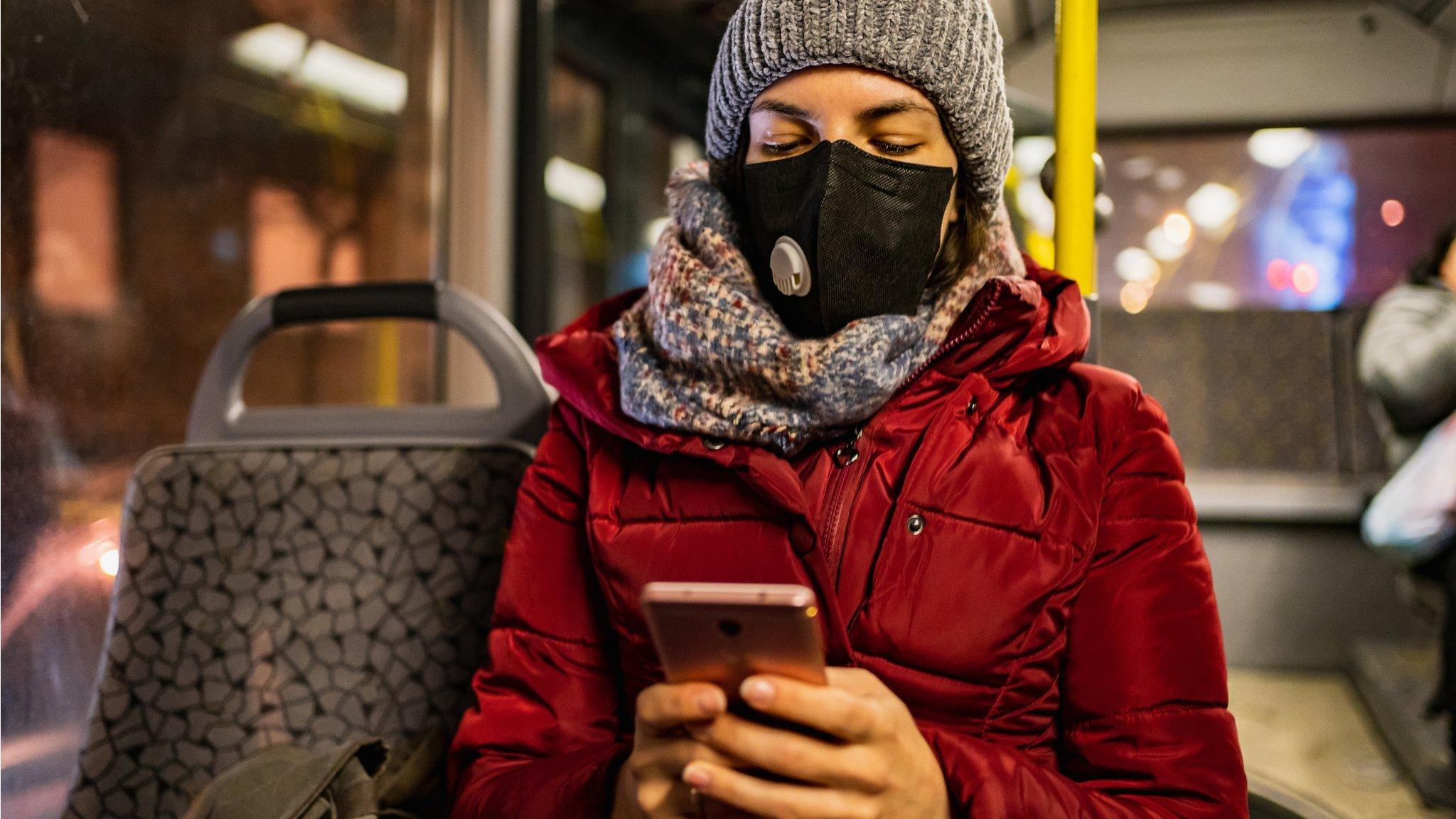
Winter is coming and traditionally it is party time for colds and flu.
This has raised fears that coronavirus will surge when the seasons change, possibly leading to a second wave of the disease that is even bigger than the first.
However, predicting what a Covid winter will look like is complex and uncertainty reigns - there are reasons both to be worried and to be reassured.
How bad a northern hemisphere winter will be is dependent not only on the coronavirus, but on what happens to all the other winter bugs, our own behaviour and the success, or failures, of government policy.
There is also the relatively new field of science showing one viral infection can potentially block another one, with still unknown implications for coronavirus.
So are we heading towards the UK Prime Minister Boris Johnson's vision of normality "by Christmas" or could it be a rough ride?
Will coronavirus spread more in winter?
This is a big unanswered question but the science leans towards yes. This is largely based on what we know about other viruses.
There are four other types of coronavirus, which cause common cold symptoms. Each spreads more easily in winter, external. Influenza, rhinoviruses, which also cause the common cold, and respiratory syncytial virus (RSV) have similar behaviours.
"It may be seasonal, based on other viruses that do tend to peak in winter," Dr Rachel Lowe, from London School of Hygiene and Tropical Medicine told the BBC.
She added: "But the driving mechanisms are poorly understood, is it the meteorological conditions or human behaviour?"
All viruses survive outside the body better when it is cold. The UK's Scientific Advisory Group for Emergencies (Sage) says a temperature of 4C is a particular sweet spot for coronavirus. There is also less UV light, which inactivates the virus, from the sun in winter too.
We gather indoors once the weather turns and beer gardens and BBQs are less appealing. We also slam the windows shut so there is little ventilation. All of this can help coronavirus spread.
As one senior government official told me, "We can get away with a lot in summer."
A report by the Academy of Medical Sciences, external estimates there could be 251,000 deaths this winter in the UK, in a worst-case scenario.
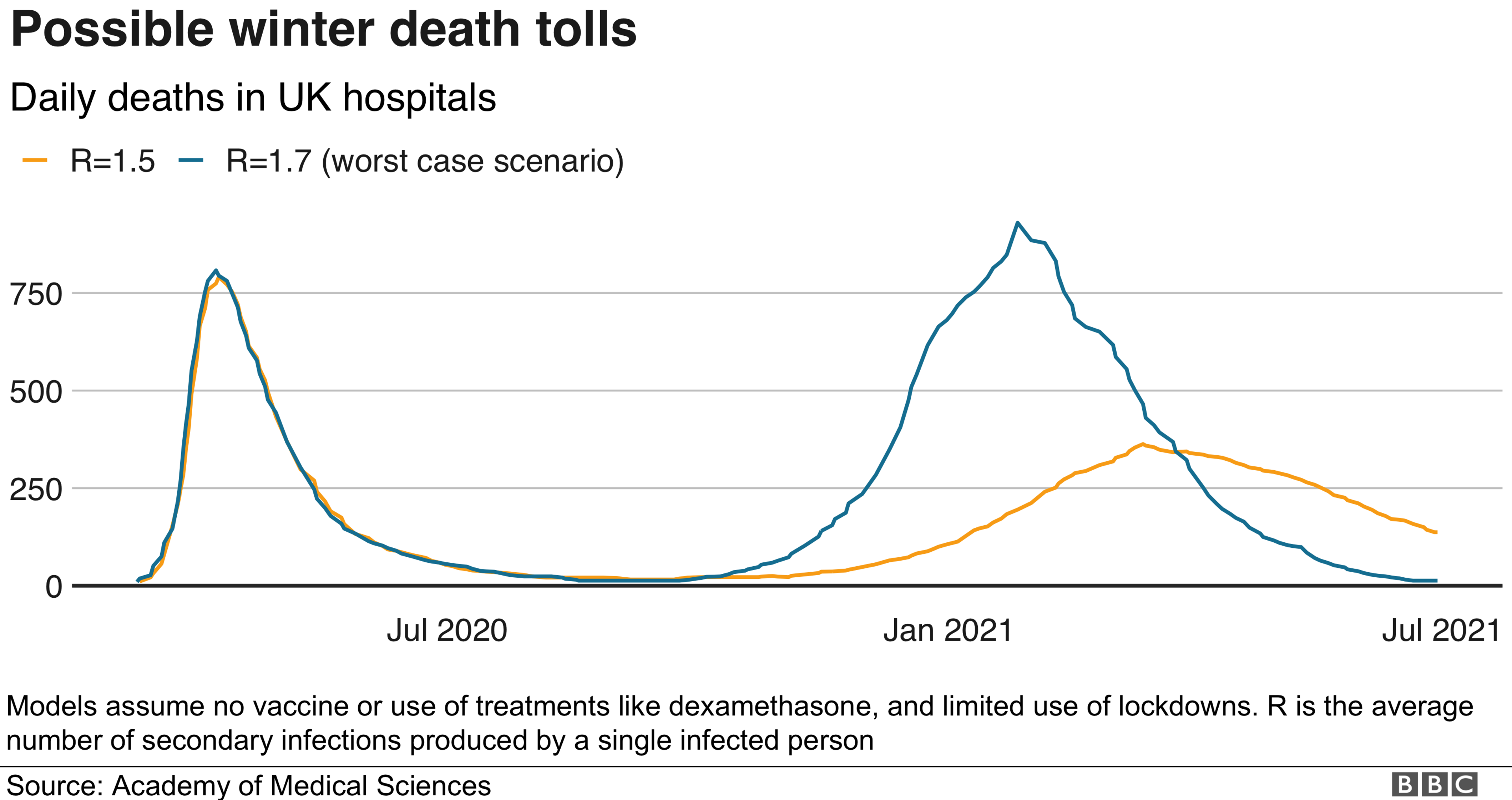
That figure assumes the R number - the number of people each infected person passes the virus onto - rises to 1.7. It was around 3.0 before lockdown and is below 1.0 at the moment.
However, a smaller rise in R would lead to a significantly smaller rise in cases.
"People are reasonably and justifiably concerned, I think," Prof Wendy Barclay, from Imperial College London, told the BBC.
She added: "It's quite possible there will be a second wave, it is clear we haven't reached anything like herd immunity and winter is a very obviously a time you'd expect a second wave to do well.
"It's a huge unknown at the moment, I think things could be bad, yeah."
It is estimated that only around 5% of people in the UK have been infected with coronavirus so far - or in other words around 95% have no immunity at all. The US has demonstrated cases can surge if control of the virus slips.
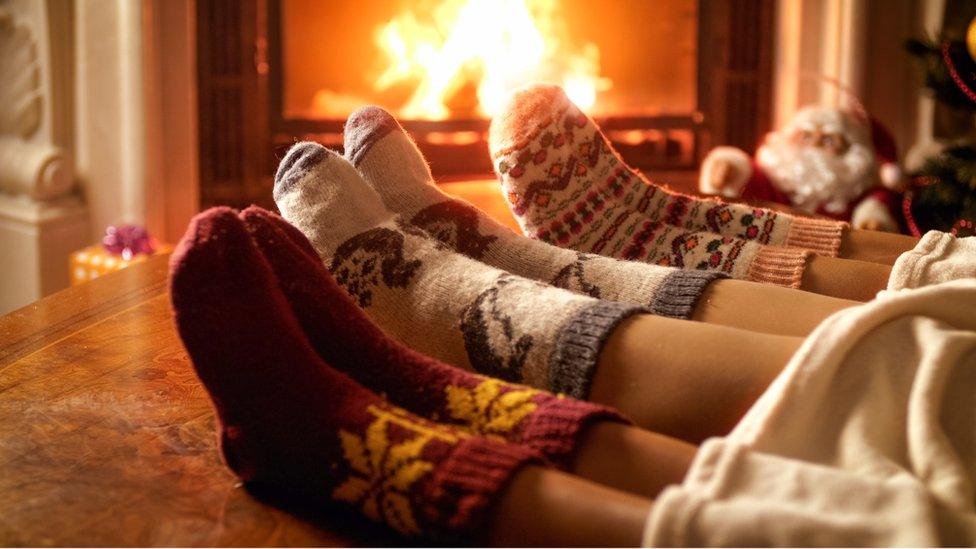
People gather more indoors in winter
Will other winter viruses like flu be a problem?
The big fear is that we will be hit with the double whammy of a really bad flu season and a second wave of coronavirus.
However, everything is out of whack and it is not clear how many of the normal rules apply.
The massive transformation of societies and how we behave - from washing our hands more, face coverings, social distancing and working from home - to stop the spread of coronavirus appears to have had a knock-on affect on other viruses too.
Lockdown in Hong Kong appeared to suppress flu season there, external and Australia, where it is currently winter, is either having an almost non-existent flu season or it is arriving unusually late.
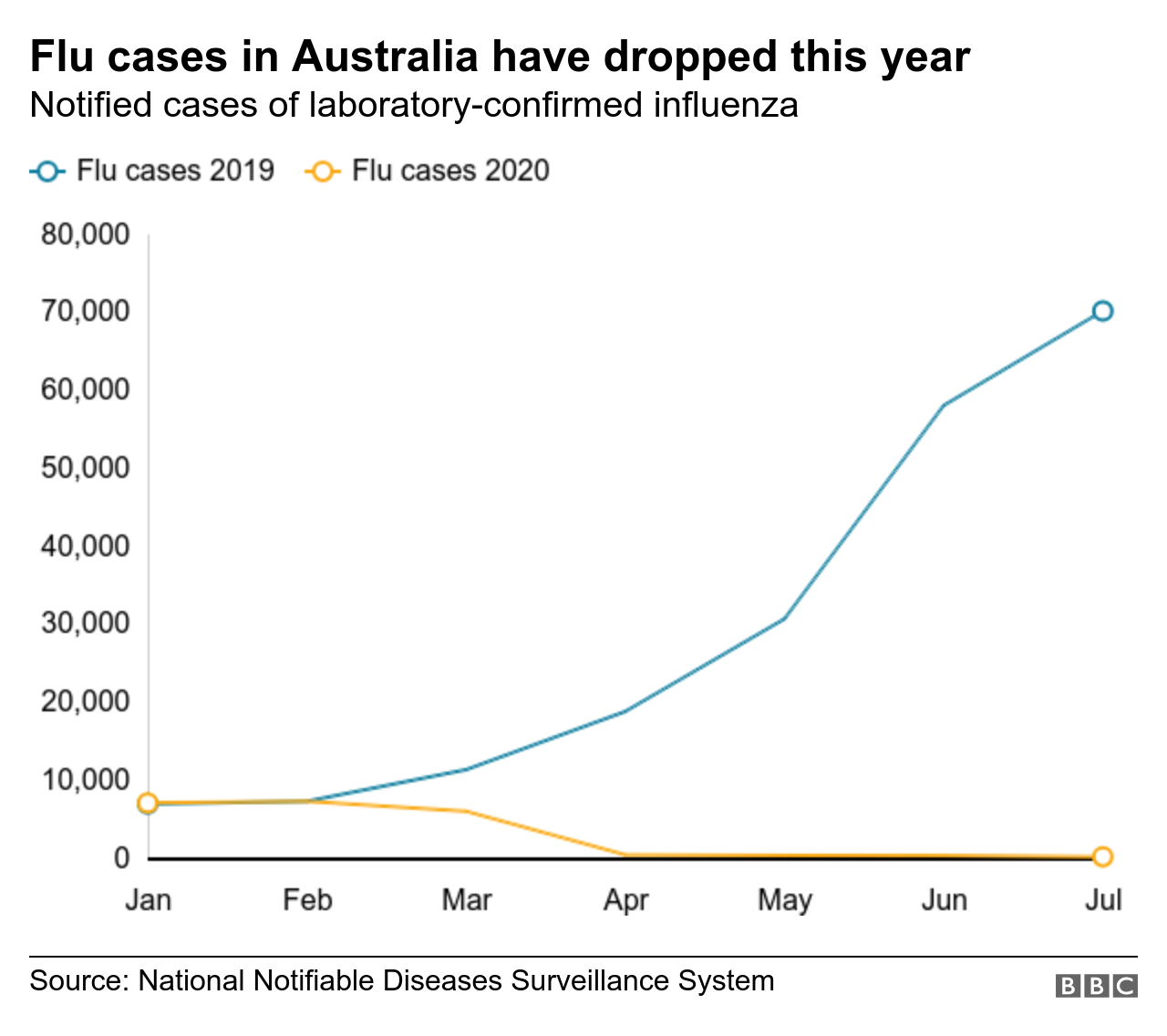

A similar picture on flu and other winter bugs, is emerging in other countries in the southern hemisphere, including Chile and South Africa.
It is, however, dangerous to assume the same will happen in the northern hemisphere's winter. Lockdowns, school closures and limiting flights around flu season would have had an impact. But now some countries in the northern hemisphere are opening up not locking down.
"It is possible that social distancing has decreased the amount of flu that's around and that would be great, but I don't think we could rely on that," says Prof Barclay.

TESTING: Who can get a test and how?
YOUR QUESTIONS: Our experts have answers
LOOK-UP TOOL: How many cases in your area?
GLOBAL SPREAD: Tracking the pandemic
THE R NUMBER: What it means and why it matters

If there are high levels of other winter bugs which cause coughs and a fever, like coronavirus, then far more people are going to have to be tested.
Prof Julian Hiscox, from the University of Liverpool, told the BBC: "I think we should be prepared for a second wave and not let up in terms of our social distancing and hand hygiene because it will come if we don't.
"One of the ways I think we need to prepare is very good diagnostic tests to distinguish between those three or four respiratory infections where the clinical symptoms are initially the same.
"Then, when someone walks in you can immediately say they've got Covid or they've got flu."
It is why the UK is trying to expand testing capacity to 500,000 a day and immunising a record number of people against flu.
"I think it [a winter surge] is something we absolutely have to prepare for, the biggest danger is people becoming complacent about protecting themselves," said Dr Lowe.
What happens when viruses mix?
One of the most scientifically curious and unexplained aspects of winter is how the new coronavirus, officially called Sars-CoV-2, will interact with other viruses.
Respiratory viruses are all trying to infect the same real estate in your body - the cells in your nose, throat and lungs. This can lead to competition.
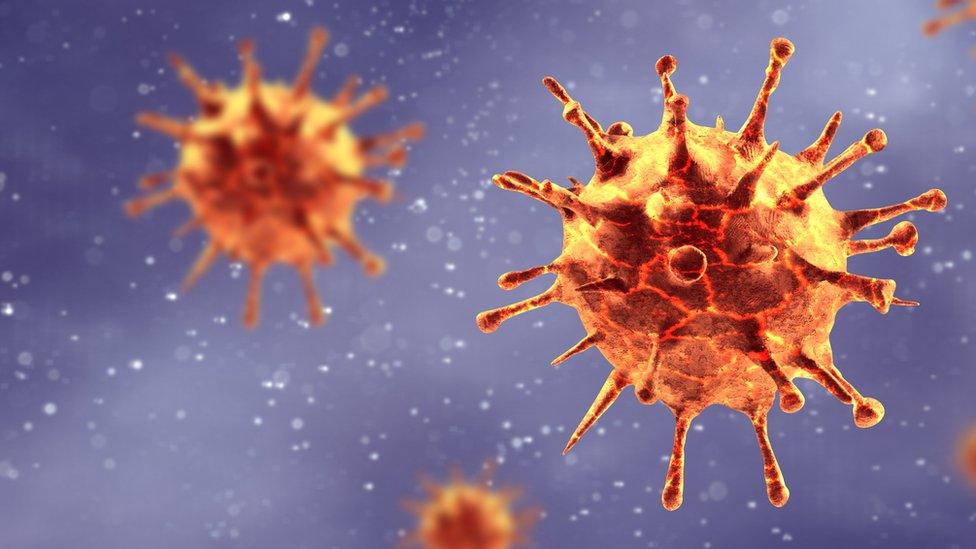
Studies have shown, external one viral infection can, in essence, elbow another one out of the way. For example, a large rhinovirus outbreak may have delayed, external the 2009 swine flu pandemic in some European countries.
One explanation is the general immune response to one infection prevents the next one from getting in.
Dr Pablo Murcia, from the centre for virus research at the University of Glasgow, told the BBC: "One virus infects, triggers an innate immune response and inflammation and this initial response will protect against certain viruses, for a variable period of time."
But the same studies have shown some viruses actually get on quite well together and circulate at the same time. So how will Sars-CoV-2 fit into this complex landscape?
"Our data showed that influenza is very rarely seen in mixed infections, so I would think that we will not see much Sars-CoV-2 and influenza co-infection," Dr Murcia said.
There have been few recorded cases of somebody being infected with both - and the result was far worse than either infection alone.
However, Dr Murcia said other types of coronavirus did seem to cause infections at the same time as RSV, adenoviruses and some parainfluenza viruses.
"I am worried about now and the future," he said.
Follow James on Twitter, external

INSIDE HEALTH: Why is there an elevated risk from Covid-19 for some groups in society?
DIET AND MENTAL WELLBEING: Does the food you eat help or hinder you emotionally...
